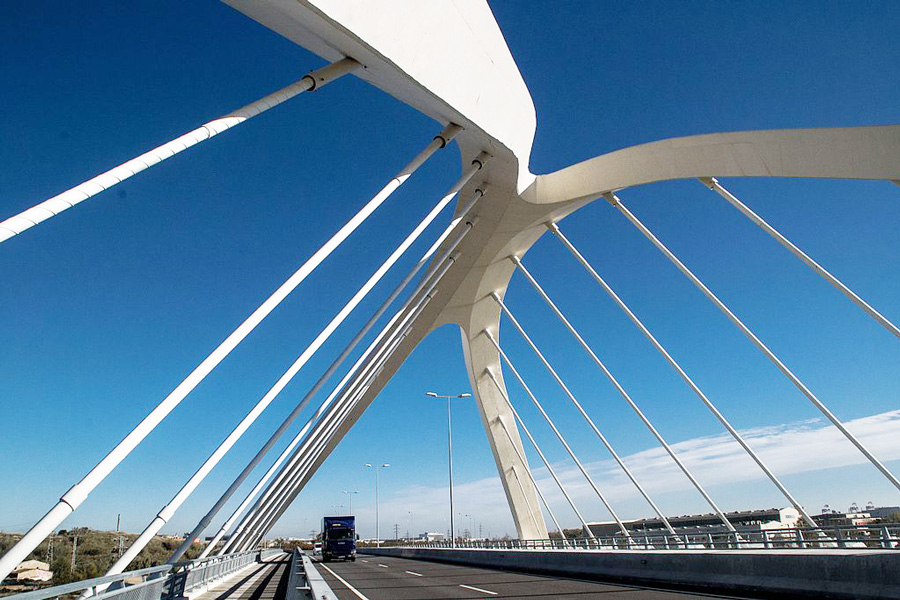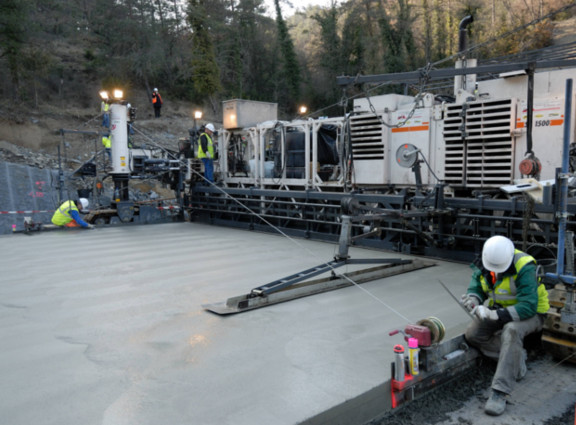SHIELD OF HUMANITY
The protective function of cement facilitates the coexistence between human activity and the natural environment

What would a world without cement look like? How many constructions would have supported the passage of time? How many lives would have been lost by the inclement weather or because of a fire? How would we live without safe houses, schools, hospitals or roads? How would water safety be guaranteed?
These are difficult questions to imagine by the citizens of the XXI century that we live in, without being completely conscious, surrounded by buildings and infrastructures built with cement. This universal material with which we live and share our lives is already an inseparable part of modern developed societies. It has its origin in the quality of life that we enjoy, and with it we have security, protection and comfort.
ADVANTAGES AND QUALITIES
SAFETY FOR PEOPLE
Due to its durability and strength characteristics, concrete and cement-based constructions play an important role in minimizing the consequences of sudden weather changes and natural disasters (floods, hurricanes, earthworks, earthquakes, volcanic eruptions, fires, cold or heat waves, storms …).
To avoid and minimize the impacts that these accidents can have on people, cement provides a series of protective and defensive measures. Therefore, infrastructures for the prevention of floods (pipelines, containment structures, tunnels), coastal protection (barriers, dykes, breakwaters), to prevent earth movements (containment structures, drainage structures), fire prevention (Water reservoirs, paved boundaries) or earthquake resistant structures are built. Concrete can even be used to build protective barriers in cases of volcanic eruptions or nuclear accidents.


DEFENSE OF THE NATURAL ENVIRONMENT
Human activity can negatively impact nature and lead to harmful effects on the environment. The nature and other living species of the planet can suffer the consequences of man’s hands (fires, accidents in industrial facilities, chemical spills, pollution, etc.), that sometimes can be very serious and irreparable.
Portland cement has contributed to the development of materials and construction techniques that help avoid or minimize the effects of these situations.
In such way, cement acts as a mediator between humanity and nature, offering bridges of dialogue to improve coexistence. Over time, man kind has learned to respect and live with the wildest side of nature and, in turn, she has approached humans by nurturing them. Thus, with willpower, generosity and empathy, the two parties can coexist and coexist in a peaceful and harmonious way.
FIRE RESISTANCE
Another of the great qualities of this essential material for the development of our society is its resistance to fire. Some of its properties are:
- Fireproof, Non-flammable and poor heat conductors
- Does not release toxic fumes or gases
- It maintains its mechanical characteristics, which facilitates the evacuation and help from firefighters
- Provides passive resistance to flames (structural stability, prevents collapse)
- Limits fire affected areas
- Prevents collapse and collateral damage
- Easily repairable
- Does not degrade due to water use
| Wood | Steel | Concrete (cement) | |
|---|---|---|---|
| Fire resistance without treatment | Very low | Low | High |
| Combustibility | High | None | None |
| Contribution to fire load | High | None | None |
| Heat conductivity | Low | Muy alta | Very low |
| Incorporates protection against fire | Very low | Low | High |
| Possibility of repair after fire | None | Low | High |
| Protection to users and firefigthers during evacuation | Low | Low | High |

THERMAL STABILITY
Another of the most valuable benefits of this material in terms of energy efficiency and sustainability is its thermal stability. Several studies from university centers suggest that the thermal capacity of concrete allows an energy consumption reduction between 2% and 15% depending on the weather.
Buildings constructed with this material help to preserve heat during winter and to maintain a cool temperature during summer, which results in a greater energy saving, since it allows to reduce consumption of heating and air conditioning, hence, it contributes to lower domestic CO2 emissions. This is due to the thermal inertia of concrete, which allows a daily compensation between maximum and minimum temperatures.
Architects, public administrations and citizens are aware of the thermal efficiency of their buildings, especially when 25% of greenhouse gas emissions are produced in households.
DURABILITY
Because of their long durability, concrete structures have very long useful lives. With minimum maintenance, they have a great capacity to withstand mechanical actions, chemical attacks or other deterioration processes. In this sense, the technical evolution, with which high performance concrete has been achieved, has considerably increased the durability and life cycle of the structures. This improvement makes concrete one of the most suitable materials to meet the social demands of sustainable construction.
In addition, at the end of the useful life, this material can be recycled: as aggregates for construction or to manufacture new materials.

